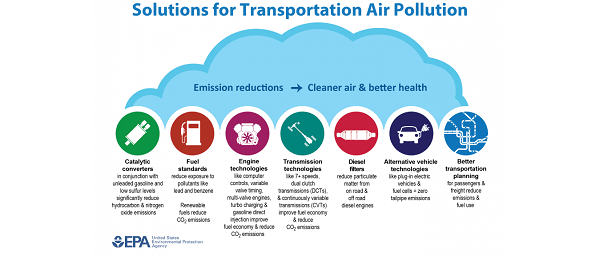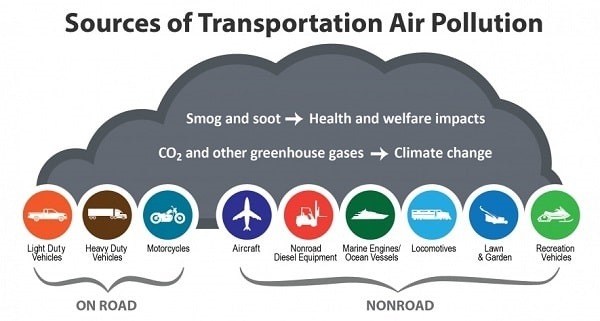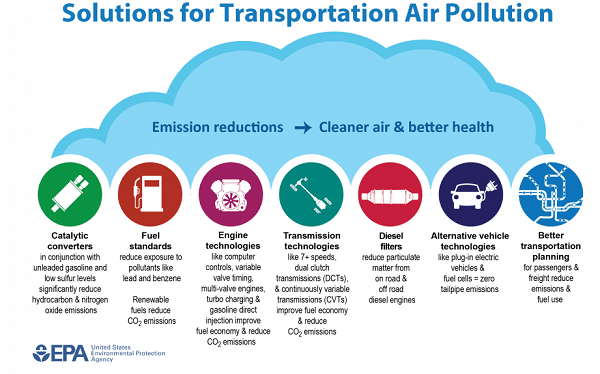GHG Phase 2 Rule for Trailer Manufacturers: What You Need to Know


When then-President Barack Obama adopted the 2014 Climate Action Plan, his administration decided to shine a light on one, very important reality – that roughly 20% of greenhouse gas emissions and oil used in the transportation agency are caused by heavy-duty vehicles. It’s a staggering figure, and one that, naturally, became a central focus of the plan. In the years following the Climate Action Plan’s initiation, members of the EPA began to set extremely stringent benchmarks for heavy-duty vehicles with the goal of significantly cutting emissions within the next 25 years. This is how GHG Phase 2 was born.

Screenshot via EPA.gov
GHG Phase 2 and Fuel Efficiency Standards is the newest set of heavy-duty vehicle standards stipulated by the EPA as an aim to significantly cut greenhouse emissions. GHG Phase 2 concerns a large range of heavy-duty vehicles, like trailers, heavy-duty pickup trucks, and even some vocational vehicles.
According to the agency’s website, it conducted a joint workshop with the NHTSA to formulate a certification process for GHG Phase 2 compliance back in 2016. It was then that both the NHTSA and EPA determined the rules necessary to meet the goals stipulated in the 2014 Climate Action Plan.
For truck trailer manufacturers, specifically, design and logistics factors must be taken into consideration to ensure compliance. It should be noted that in the EPA’s Frequently Asked Questions About Trailer Standards for Fuel Efficiency and Greenhouse Gas Emissions, the agency states that compliance mainly rests upon the shoulders of manufacturers, not operating companies or drivers.
Here are some of the main steps that truck trailer manufacturers will have to take in order to be fully-compliant:
There are several factors that go into manufacturing a compliant trailer, all of which are outlined in the EPA’s Phase 2 Heavy-Duty Greenhouse Gas (GHS) and Fuel Consumption Trailer Implementation Workshop manual. It is in this guide that you learn how this rule might alter your specific design.

Screenshot via EPA.gov
As you can see, this rule affects new trailers exclusively, which means that there are absolutely no requirements in regards to retrofitting or retiring old trailers when the rule goes into effect.
GHG Phase 2 compliance should have gone into effect on January 1, 2018, but pushback from the trucking industry and a recent review of the rule has curtailed the enforcement efforts.
At this point, both the NHTSA and the EPA have come to a standstill in their decision-making. This means that manufacturers aren’t yet privy to any enforcement timeline, a detail that could throw a wrench into production schedules.
In an August 6th court filing by the Truck Trailer Manufacturers Association, we learned that the future of the GHG Phase 2 seems uncertain.
“Counsel for TTMA have conferred with counsel for the agencies, but counsel for the agencies have not provided additional information concerning the status or timing of their decision-making process,” TTMA’s motion said. “None of the status reports offer any information about the agencies’ progress; what if anything has been accomplished; or what if any schedule the agencies have in mind for completing their review or even completing any initial step in their review.”
But, delays aside, there is no sign that the rule will be abolished; trailer manufacturers must be compliant whenever it may be put into effect. In the meantime, trailer manufacturers should stay up-to-date on the latest trailer technology and keep up with existing rules and regulations, such as Code NAICS 336212 and GVWR requirements. To keep up with the latest news and decisions on GHG Phase 2, check the EPA’s site regularly.
Our sales engineers are experts in automatic asset tracking, tagging and identification,a nd can answer all your questions. Get in touch now.
Lets Talk ›